The special agent in charge at the FBI Little Rock field office, Joseph Casper, had focused on national security cases and the occasional fugitive during the 1950s. As a result of a meeting with U.S. District Judge Ronald Davies, the FBI launched its investigation of the Central High School Crisis amid disturbing rumors of Arkansans preparing for violence. Such buzz included tales of shopkeepers witnessing an unprecedented boom in weapon sales and a conspiracy that the White Citizens’ Councils meant to provoke the mobs around the school into a riot and kill the Little Rock Nine.
Governor Orval Faubus launched these tales in hope that the federal courts would stall desegregation for public safety and provide essential political cover for calling out the National Guard.
Agents moved in and out of the field office, then located in the Rector Building, and combed over the city for information. Scores of FBI personnel came from out-of-state offices and stayed in motels outside the city to keep a low-key presence. Altogether, 200 agents worked on the case. They interviewed 450 people: law enforcement, out-of-towners, and other interested parties.
Weapon Sales
Sargent Melvin DeLong of the Arkansas State Police exited a meeting with Faubus with an order to survey the city's businesses and find evidence of soaring weapons sales. DeLong sent his detectives on the mission, an hour before the city's shops closed down, and found enough information that the governor wanted.
Rumors of the mobs outside of Central High carrying guns and knives unnerved residents, along with horrid possibilities of children carrying with water guns filled with acid. The FBI moved swiftly.
Agents interviewed individuals who disseminated the rumors. These subjects denied having any knowledge other than what they had heard from others. It left agents to dispel the next allegation. This included the Little Rock police officers, who now claimed that weapons sales were the same or slightly below normal than the previous year. Scrutiny on Faubus increased.
The FBI dismantled the allegations that had only glimmers of truth. Business owners provided consistent accounts of teenagers and adults inquiring about purchasing weapons or ammunition. One hardware store owner noted a sharp increase in the sale of pistol ammunition in the months before the school year started. Another reported a 200% increase in pocket knife sales, although he claimed it had nothing to do with the crisis.
Weapons activity among students in the school, too, appeared true. Arkansas State Police recovered various weapons around Central: knives, brass knuckles, and a whip among other things. Agents interviewed students and confirmed that some had smuggled weapons inside the building. One student identified a junior who kept a belt complete with nails and tacks in his locker but never used it.
Conspiracy
Investigators were concerned about the White Citizens’ Councils, in fear that its leadership conspired to attack the Little Rock Nine. These organizations, established after the Brown v. Board of Education ruling, had pressured southern state and local governments to maintain Jim Crow laws. Arkansas had such groups like local chapters of the Citizens' Councils of America, the White Citizens' Councils of Arkansas, White America, Inc., and others.
As the crisis unfolded, caravans of people from east Arkansas arrived in Little Rock. Many were affiliated with the citizens’ councils. The FBI conducted interviews with the caravan leaders, with each telling an identical message. They supported Faubus, would defend segregation to their very last breath, and knew nothing about violence around the school.
Further inspection confirmed that these organizations benefited from the crisis with heightened interest from outraged white citizens. The Little Rock chapter reported that hundreds attended its meetings held at the city’s hotel ballrooms and others, Central students included, distributed segregationist literature. Ultimately, the FBI concluded that while members of the councils were part of the mobs, no evidence existed that these organizations had conspired acts of violence.
Conspiracy
During the course of the investigation, Hoover played damage control after Faubus and Arkansas Congressman E.C. Gathings questioned the FBI’s ethical and moral behavior. Faubus claimed that the FBI illegally wiretapped phone lines at the Governor’s Mansion and dropped innuendos about male agents interviewing teenage girls behind closed doors for hours at a time. Gathings, who represented those in the caravans from eastern Arkansas, accused the FBI of “gestapo tactics” such as tailing cars. Hoover released press statements and cleared his agents of any wrongdoing, which the FBI report reaffirmed.
It is not known if Faubus ever considered that spreading rumors of potential, unconstrained violence would provoke an FBI investigation. But his actions, pragmatic from his standpoint, did enough to further rile up anger towards the federal government. The FBI's conclusions did not matter to him. He did his job in discrediting the investigation.
The FBI's post-crisis legacy in Little Rock is defined by combating the Ku Klux Klan. The field office focused on the KKK in the 1960s, while maintaining informants and keeping tabs on its activities.
Anderson, Karen. Little Rock: Race and Resistance at Central High School. Princeton: Princeton University Press, 2010.
The Federal Bureau of Investigation. https://www.fbi.gov/history/field-office-histories/littlerock (accessed May 31, 2017).
FBI: Little Rock School Crisis Report, 1954-1958. UA Little Rock Center for Arkansas History and Culture, Little Rock, Arkansas.
Reed, Roy. Faubus: The Life and Times of an American Prodigal. Fayetteville: University of Arkansas Press, 1997.
Jared Craig serves as virtual exhibit coordinator for the UA Little Rock Center for Arkansas History and Culture. He received an MA in Public History from UA Little Rock and a BA from the University of Central Arkansas. His research interests include political movements in the American South, crime, and the media.
